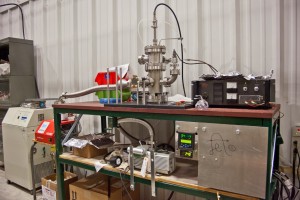Read below to find out how IBS is advantageous when it comes to thin film deposition.
Manufacturing optical thin films is a large industry that utilizes various techniques in order to achieve the highest quality possible. One of the more common approaches to these films is by using ion beam sputter deposition. Taking place in a vacuum chamber, IBS typically uses a high energy ion beam as the primary source – this is typically composed of various metals or oxides.
How does IBS work?
The high energy beam that’s shot out towards the target material creates a momentum that causes the atoms and molecules to “sputter” off onto the substrate, thus creating the thin film. As mentioned before, the vacuum chamber plays a vital role in the entire process. Note that there is oxygen present within the vacuum chamber at low pressures. This is designed to create oxidation or re-oxidize when needed.
What about the Quality?
What results from IBS is a highly uniform, highly dense film with excellent coverage and adhesion to the substrate itself. This is important because films require mechanical durability and stability. IBS provides a great amount of precision and makes hitting performance targets efficient and easier than PVD thermal evaporation. This process can also be automated, which doesn’t require supervision from the operator.
Summing it Up
IBS delivers excellence when it comes to both stability and durability of optical thin films. They also have the lowest absorption rate of any other type of coating type. There are very few drawbacks to utilizing this method, except for the limited range of materials that can be used – typically going to be metal oxides. IBS proves that it’s both a reliable and consistent method of generating thin films.
Denton Vacuum, LLC manufactures high-quality systems for electron microscopy, ophthalmic applications, and PVD coating.








